 W
WAglossa signicostalis is a species of snout moth in the genus Aglossa. It was first described by Staudinger, in 1871, and is known from Israel, Italy, the Czech Republic, Slovakia, Hungary, Romania, Bulgaria, North Macedonia and Greece.
Ancylosis hellenica is a species of snout moth in the genus Ancylosis. It was described by Otto Staudinger, in 1871, and is known from Greece, Bulgaria, the Republic of Macedonia and Turkey.
 W
WArgyresthia submontana is a moth of the family Yponomeutidae. It is found in Sweden, Finland, Germany, Poland, Slovakia, Austria, Switzerland, Italy and France.
Argyresthia thuiella, the arborvitae leafminer, thuja mining moth or American thuja shoot moth, is a moth of the family Yponomeutidae. It is found in southeastern Canada and the northeastern United States to North Carolina, west to Missouri, north to Manitoba. There is also an isolated population in British Columbia. The species is also present in Europe, where it has been introduced on three occasions: to the Netherlands in 1971, Germany in 1975 and Austria in 1976.
 W
WArgyresthia trifasciata, the juniper ermine moth, is a moth of the family Yponomeutidae. It is found in great parts of Europe, but originates from the Alps.
 W
WBlastesthia tessulatana, the cone tortricid, is a species of moth of the family Tortricidae. It is found in the Near East, North Africa, Portugal, Spain, France, Germany, Italy, Switzerland, Albania, Bulgaria, Greece and on Malta, Sicily, Sardinia and Cyprus.
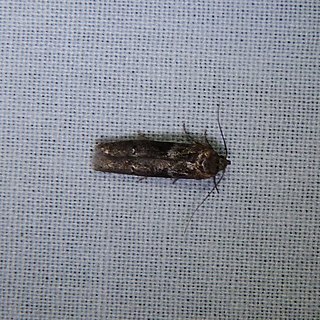 W
WBlastobasis glandulella is a species of moth of the family Blastobasidae. It is found in the eastern United States and southern Ontario, Canada. It has also been recorded in California. In Europe, it has been recorded from Austria, Germany, the Czech Republic, Italy, Slovakia and Croatia.
 W
WCadra figulilella, the raisin moth, is a moth of the family Pyralidae. The raisin moth is known most commonly as a pest that feeds on dried fruits, such as the raisin and date. It covers a range that includes much of the world, primarily situating itself in areas of California, Florida, the Eastern Mediterranean region, and some parts of Africa, Australia, and South America. The moth prefers to live in a hot, arid climate with little moisture and plentiful harvest for its larvae to feed on. Study of this species is important due to the vast amount of economic damage it causes yearly and worldwide to agriculture crops.
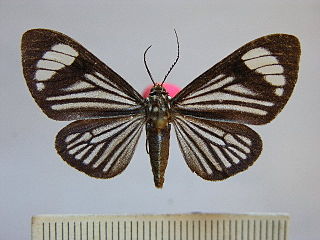 W
WCalodesma uraneides is a moth of the family Erebidae. It was described by Arthur Gardiner Butler in 1871. It is found in French Guiana.
Cameraria cincinnatiella is a moth of the family Gracillariidae. It is known from Quebec, Canada, and the United States.
Cameraria ostryarella is a moth of the family Gracillariidae. It is known from Quebec, Canada, and Illinois, Kentucky, Maine, Michigan, New York, Connecticut and Vermont in the United States.
 W
WChetone hydra is a moth of the family Erebidae. It was described by Arthur Gardiner Butler in 1871. It is found in Ecuador and Peru.
 W
WChrysiridia croesus, the East African sunset moth, is a moth of the family Uraniidae. As suggested by its common name, it is found in East Africa, including Kenya, Tanzania, Mozambique and Zimbabwe. The species was first described by Carl Eduard Adolph Gerstaecker in 1871.
 W
WCnephasia cupressivorana is a species of moth of the family Tortricidae. It is found on Corsica, Sardinia, Sicily and in Belgium, France, Spain, Italy, Switzerland, Austria, Croatia, Slovenia, Albania, Romania, North Macedonia, Greece, Asia Minor and Kyrgyzstan.
 W
WColeophora clypeiferella is a moth of the family Coleophoridae. It is found from Fennoscandia to France, Austria, Hungary and Bulgaria and from Great Britain to Latvia, Lithuania and Ukraine. It is also known from the Caucasus and Ural regions of Russia and China. It occurs in steppe and cultivated areas.
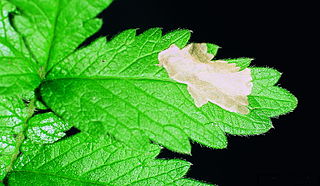 W
WCoptotriche heinemanni is a moth of the family Tischeriidae. It is found in most of Europe, except the Iberian Peninsula and the Balkan Peninsula.
 W
WDysschema thyridinum is a moth of the family Erebidae first described by Arthur Gardiner Butler in 1871. It is found in Ecuador and Peru.
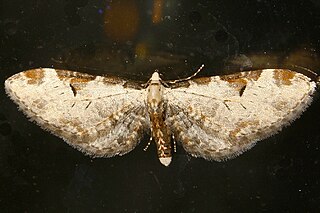 W
WEupithecia nevadata is a moth in the family Geometridae first described by Alpheus Spring Packard in 1871. It is found in western North America.
 W
WEupithecia rotundopuncta is a moth in the family Geometridae first described by Alpheus Spring Packard in 1871. It is found in western North America from Arizona to the Pacific coast, north to Vancouver Island in British Columbia.
Evergestis infirmalis is a species of moth in the family Crambidae. It is found in Greece, European Russia, Turkey and Syria.
Evergestis serratalis is a species of moth in the family Crambidae. It is found in Ukraine, the Republic of Macedonia, Greece, Turkey and Russia.
Evergestis subfuscalis is a species of moth in the family Crambidae. It is found in Bulgaria, the Republic of Macedonia, Greece, Turkey and Syria.
 W
WGelechia rhombelliformis is a moth of the family Gelechiidae. It was described by Otto Staudinger in 1871. It is found from the Netherlands and Germany east to Russia and from Denmark and Latvia south to Austria, Hungary and Romania.
 W
WHydriomena californiata is a species of geometrid moth in the family Geometridae. It is found in North America.
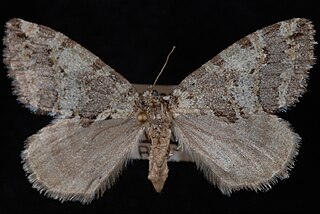 W
WHydriomena nubilofasciata, the oak winter highflier, is a species of geometrid moth in the family Geometridae. It is found in North America.
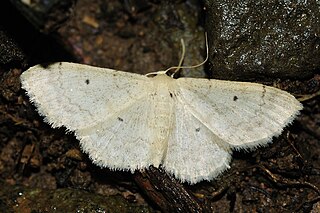 W
WIdaea mancipiata is a moth of the family Geometridae. It is found in Europe und western Asia.
 W
WIsophrictis anthemidella is a moth of the family Gelechiidae. It is found from most of Europe to the Caucasus and Central Asia.
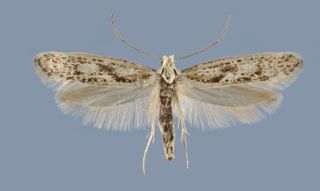 W
WKessleria alternans is a moth of the family Yponomeutidae. It is found in France, Switzerland and Italy. It has also been recorded from the Caucasus.
Leucostrophus alterhirundo is a moth of the family Sphingidae. It is found from Ethiopia and Somalia, south to Zambia and Malawi.
 W
WLuperina dumerilii, or Dumeril's rustic, is a moth of the family Noctuidae. The species was first described by Philogène Auguste Joseph Duponchel in 1826. It is found in the Mediterranean region and warmer areas of central and south-eastern Europe. Strays have been recorded from southern England. It is also present in Turkey and Jordan.
 W
WManduca diffissa is a moth of the family Sphingidae first described by Arthur Gardiner Butler in 1871. It is known from most of South America.
 W
WMesophleps oxycedrella is a moth of the family Gelechiidae. It is found in Spain, Portugal, southern France, Italy and on Sicily the Canary Islands.
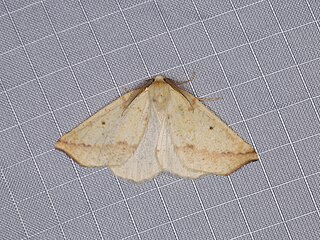 W
WNeoterpes edwardsata is a species of geometrid moth in the family Geometridae. It is found in North America.
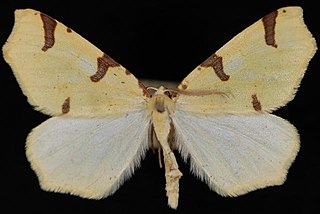 W
WNeoterpes trianguliferata, the canary thorn, is a moth in the family Geometridae. The species was first described by Alpheus Spring Packard in 1871. It is found in North America.
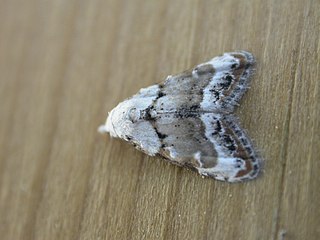 W
WNola subchlamydula is a moth of the family Nolidae. It is found in North Africa and Southern and South-Eastern Europe.
 W
WParascythris is a monotypic moth genus in the family Scythrididae erected by Hans-Joachim Hannemann in 1960. Its only species, Parascythris muelleri, was described by Josef Johann Mann in 1871. It is found in Germany, Austria, the Czech Republic, Slovakia, Hungary, Bulgaria, Romania, Poland, Latvia, Belarus, Ukraine and Russia.
 W
WPero behrensaria, or Behr's pero, is a species of geometrid moth in the family Geometridae. It is found in North America.
 W
WStamnodes marmorata is a species of geometrid moth in the family Geometridae. It is found in North America.
 W
WSyngrapha devergens is a moth of the family Noctuidae. It is found in the Alps, the Tian Shan Mountains and the Altai Mountains
Tegostoma baphialis is a species of moth in the family Crambidae. It is found in Greece, Russia, Turkmenistan and Afghanistan.
 W
WTetracis cervinaria is a moth of the family Geometridae first described by Alpheus Spring Packard in 1871. It is found in North America from British Columbia south to Kern County, California and eastward to western Montana, south-eastern Idaho, Carbon County, Wyoming and Larimer County, Colorado. It is found at elevations of 790 to 2,375 meters.
 W
WXestia rhaetica is a moth of the family Noctuidae. It is found in northern Europe, central Fennoscandia, northern Russia and further east to Siberia. It is also present in the Tatra Mountains and the Bohemian Forest. In the Alps it is found on altitudes between 1,000 and 2,500 meters, but it is found at sea level in northern Europe. The species is also present in the Nearctic, including New York.